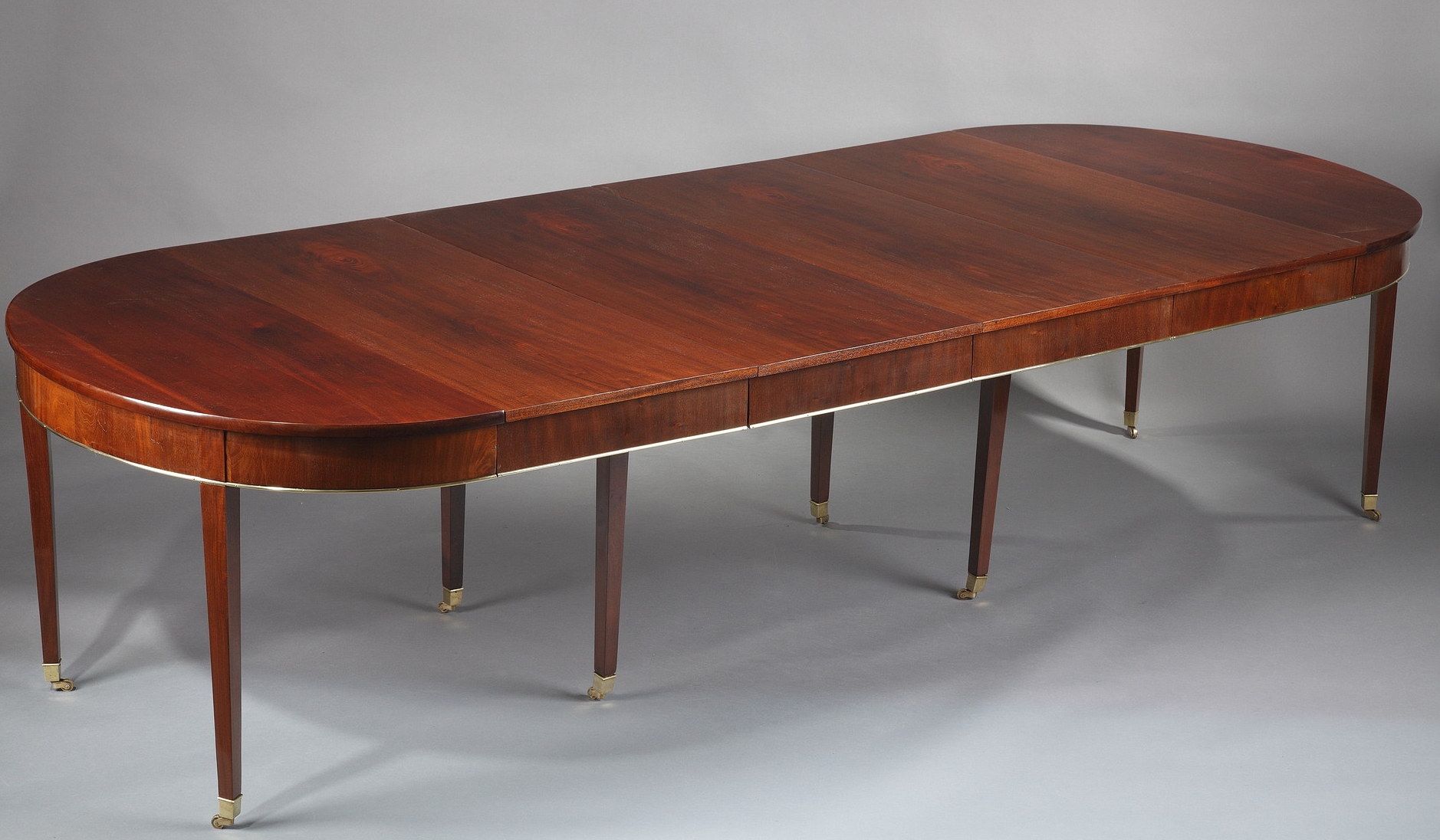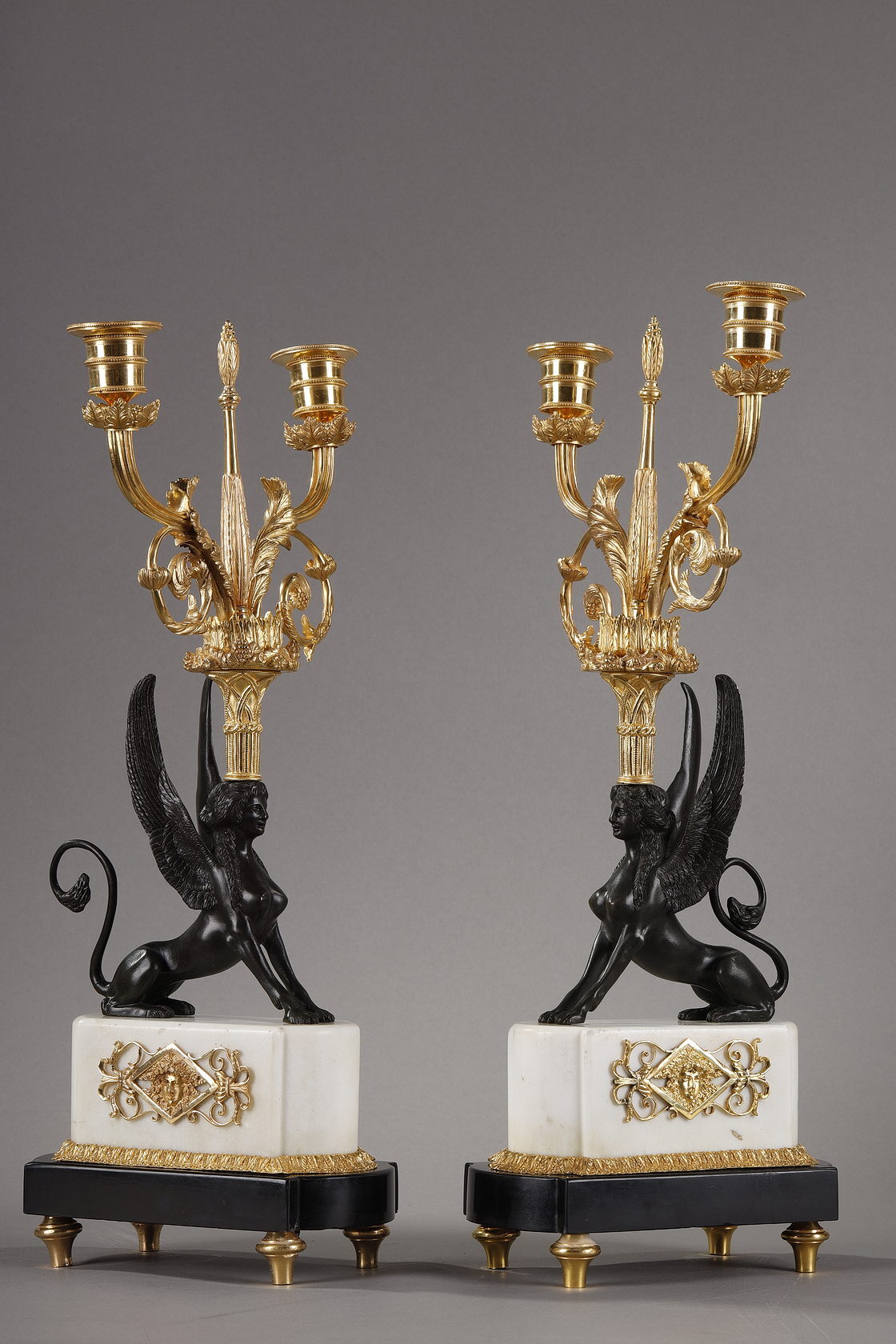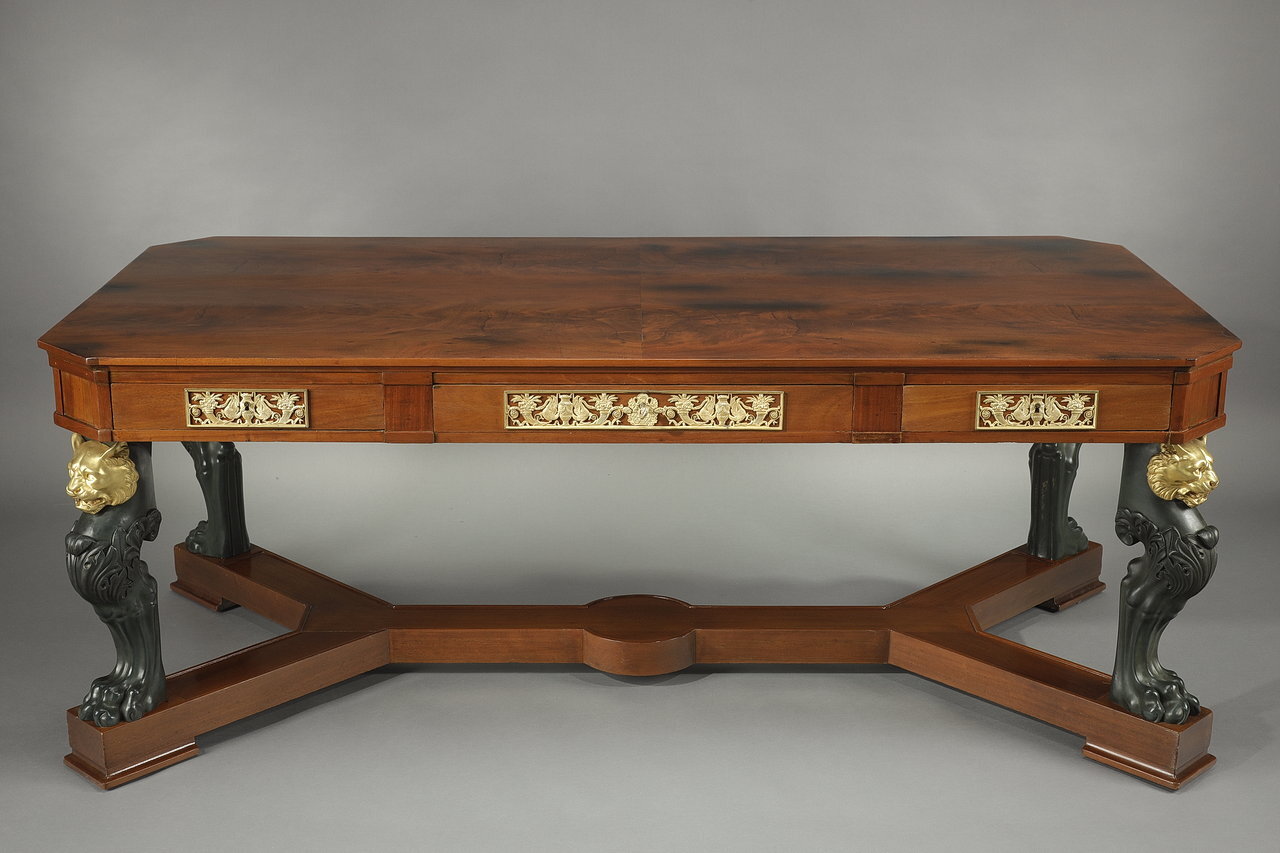The Directoire style (1789-1804)
19.10.14
The term "Directoire" refers to a historical period following the French Revolution (1789) and the National Convention (1792-1795), but also to a style of furniture and decoration covering a broader period from 1789 to 1804. It is characterized by the production of furniture with simplified forms and ornamentation, inspired by classical motifs. The Etruscan style, derived from Roman frescoes, was succeeded by the "Egyptian Revival" style, a precursor to the First Empire.
The furniture
The profound social and political upheavals that characterized this period directly impacted the production of Directoire furniture . The simplification of furniture pieces, which began in the 1780s under the influence of Greek art, intensified during this time. The suppression of guilds by the revolutionaries and the disappearance of cabinetmakers forced manufacturers in the Faubourg Saint-Antoine to simplify forms and materials.
Elegant and graceful, the furniture is generally small in size. It retains the Louis XVI structure and its design is relatively simple. The Directoire style adopts clean lines, straight lines, simple curves, flat surfaces, and right angles. The lines accentuate the geometric forms inspired by antiquity.
Furniture pieces are often made of solid wood: walnut, elm, fruitwoods, and beech. Only luxury furniture is made of solid, carved mahogany or mahogany veneer.
 Mahogany and mahogany veneer dining table with four extensions
Mahogany and mahogany veneer dining table with four extensions
The Directoire table in our collection is therefore an exceptional piece. Its structure echoes that of Louis XVI tables, with the use of extensions (in the middle) and the use of mahogany. When closed, it is round in shape and its legs are tapered and mounted on casters. Ornamentation is minimal—gilt bronze stringing under the apron and on the feet; it is the structure of the piece and its lines that give it all its elegance.
Painted furniture, made of beech, is very common, lacquered in shades of white, grey, pale blue or sea green, enhanced with gilding or contrasting tones, often in monochrome imitating Pompeian decorations.
Inlays of ebony, lemonwood, and, more rarely, mother-of-pearl and copper, discreetly adorn pieces of wooden furniture. These contrasting wood bands replace marquetry , which has almost entirely disappeared due to labor shortages and general impoverishment. On painted furniture, inlays are imitated by simple colored lines.
Ornamentation
Directoire ornamentation is very discreet and never overwhelms the structure of the furniture. The absence of ornamentalists is the main reason for this ornamental restraint. Among the characteristic motifs of this period, we can mention:
- The lozenge , sculpted in slight relief or painted, often surrounding a central motif such as a Greek vase, a medallion or a rosette.
- The palmette , already used under Louis XVI, is used very widely, in friezes or bands.
- Revolutionary and symbolic motifs : the fasces, the Phrygian cap, the oak branches, the joined hands - symbol of brotherhood, or even the triangle with an eye in the middle - metaphor of reason, disappear quite quickly.
- "Ancient" motifs such as vases, urns, freestanding columns, winged lions, swans, griffins, winged genies, and Fame holding crowns are used tirelessly.
The "return from Egypt" style
Towards the end of the century, a historical and cultural event enriched the Greco-Roman inspired motifs: the Egyptian expedition (1798-1801) . While Egyptian motifs were already present among antique ornaments under Louis XVI, this time Egyptian decoration dominated, leading to a resurgence of Egyptomania or the "Egyptian fashion" .
Pharaonic figures support the brackets of consoles or the tops of pedestal tables; sphinxes and sphinxes , griffins, and winged lions replace armrest brackets or adorn chests of drawers in the form of gilded bronze. Other typically Egyptian motifs, such as vultures with outstretched wings, complete the antique-inspired repertoire. The furniture legs are shaped like claws or paws of wild animals.
Egyptian Revival style center table
Egyptomania profoundly influenced the decorative arts and affected all categories of furniture and objets d'art. All these motifs were cataloged and disseminated in publications such as La Mésengère —an admirable collection of fashion caricatures—and the Journal de la Mode et du Goût , which served as guides for furniture and decoration professionals. This Egyptian fashion continued under the Consulate and the Empire , before being rediscovered in the 1830s by the Romantic school.



